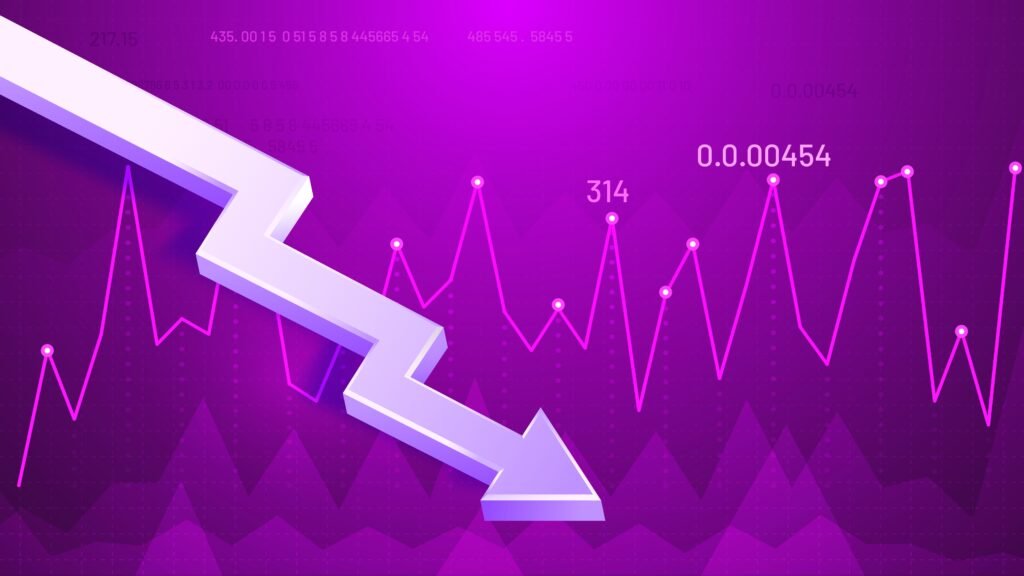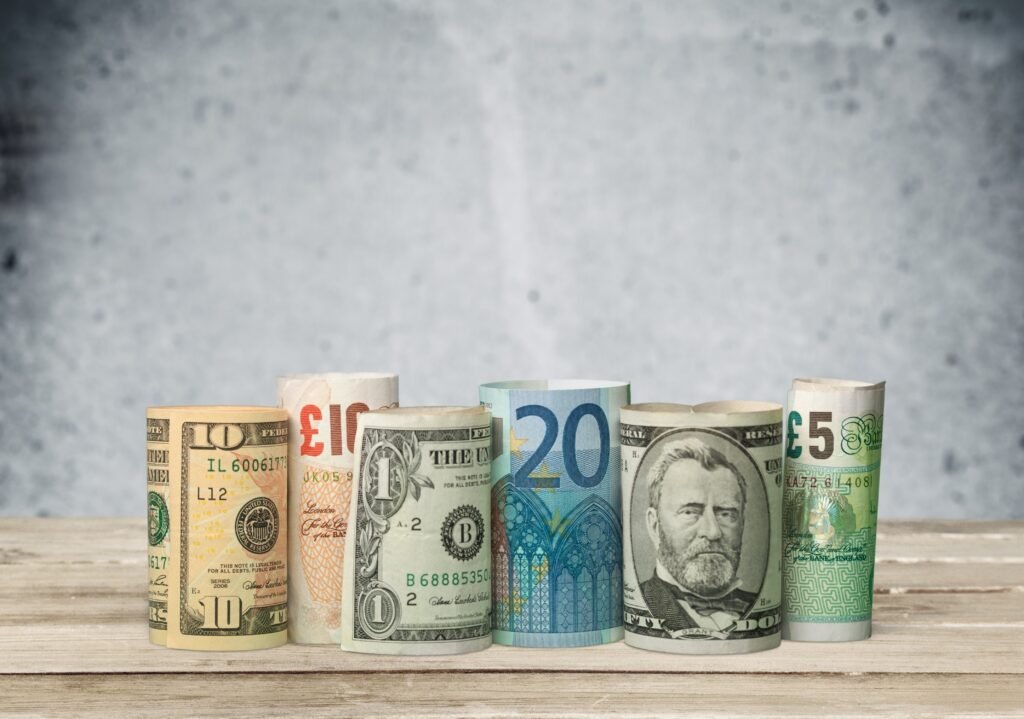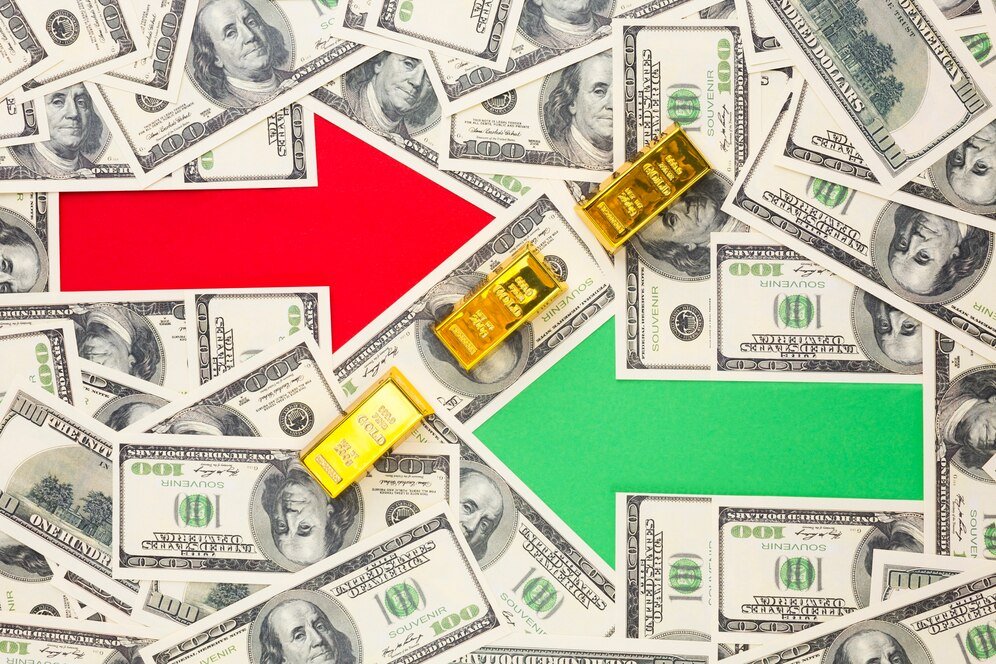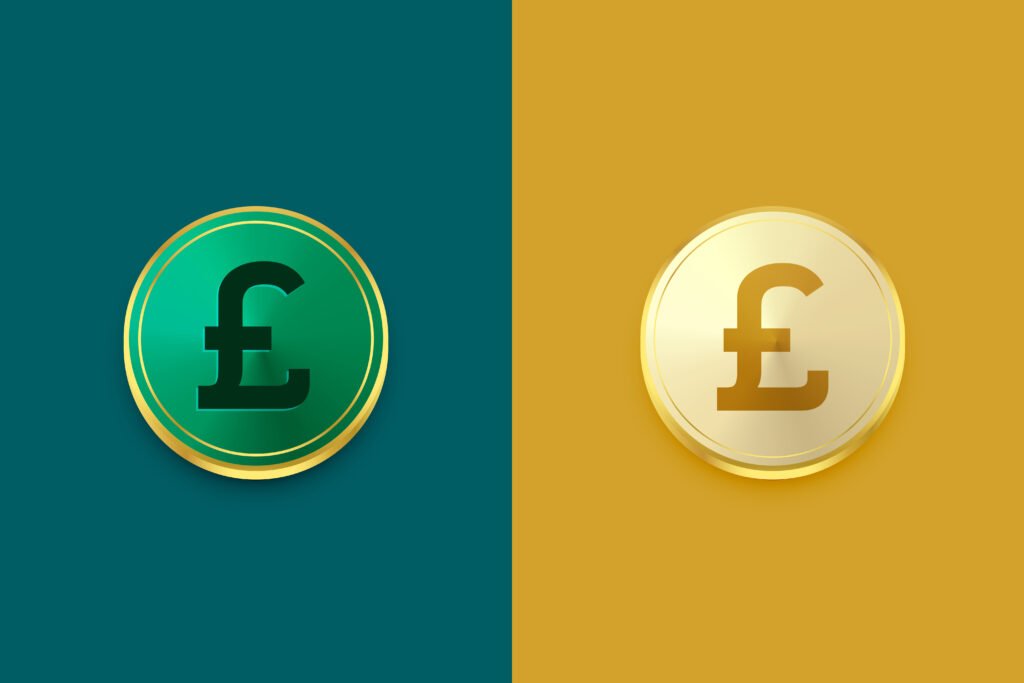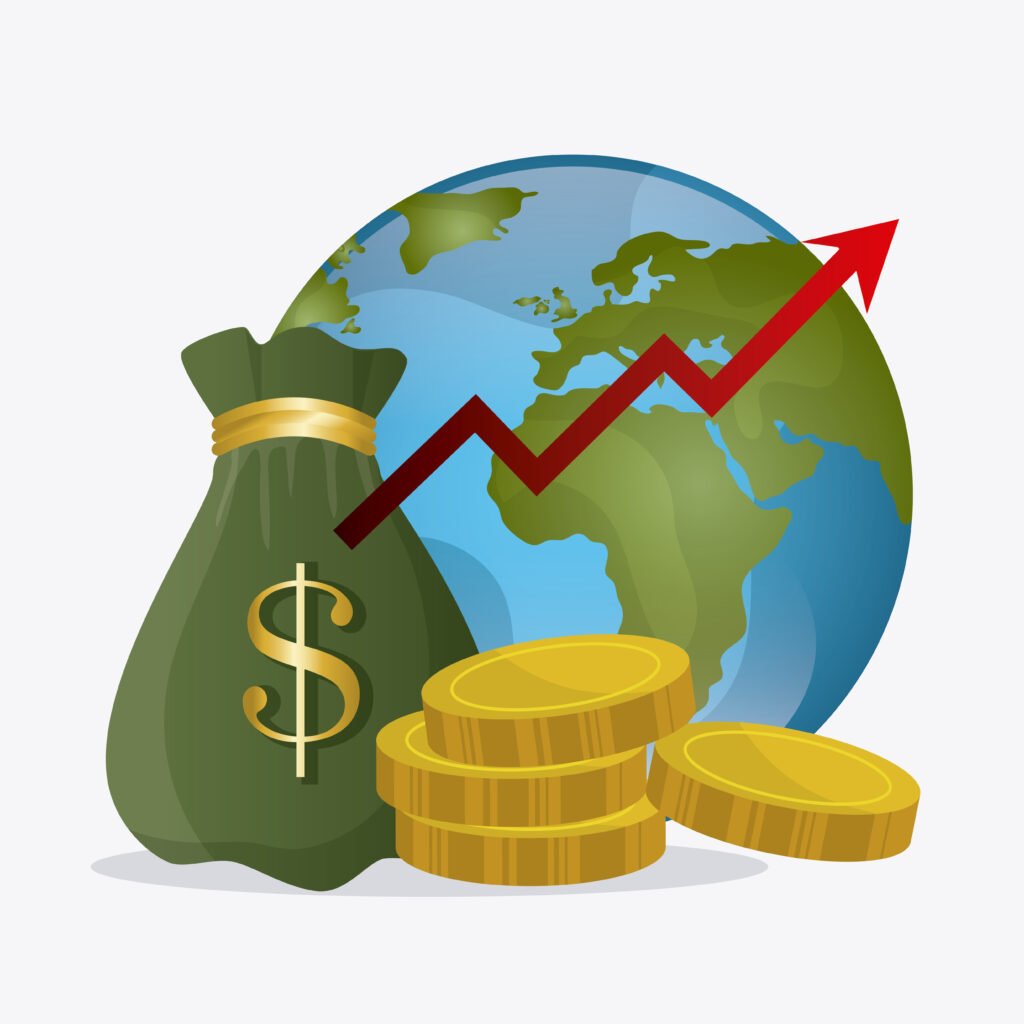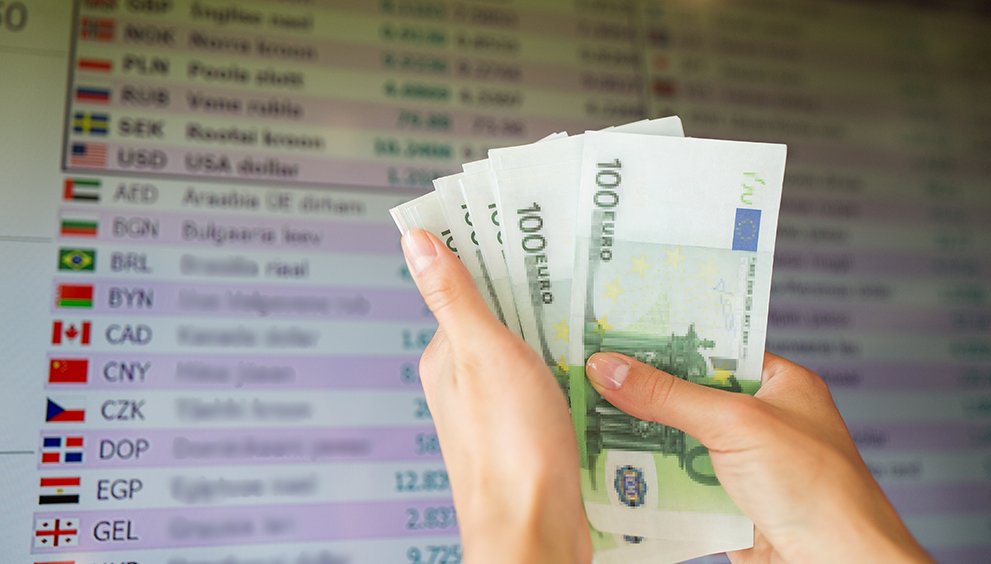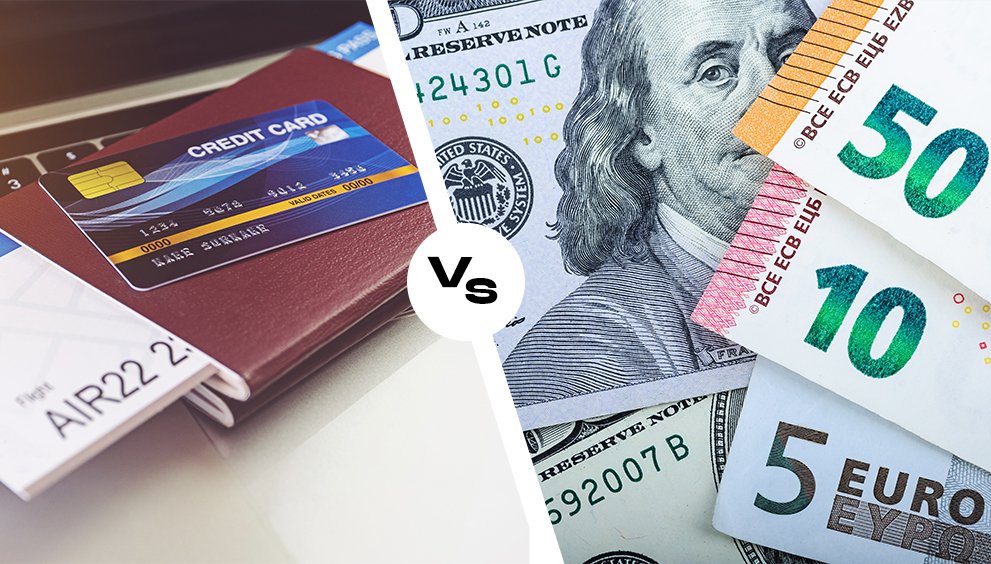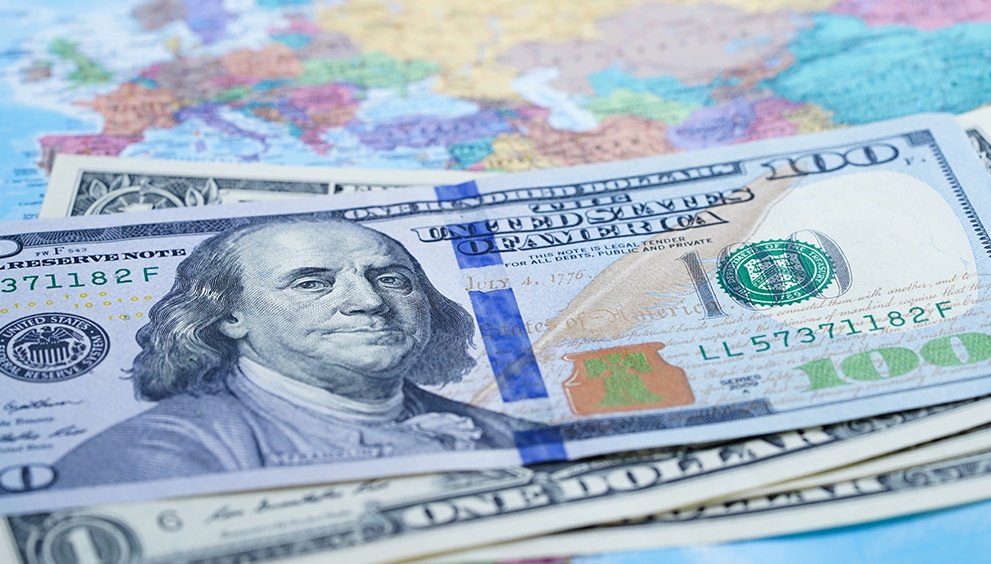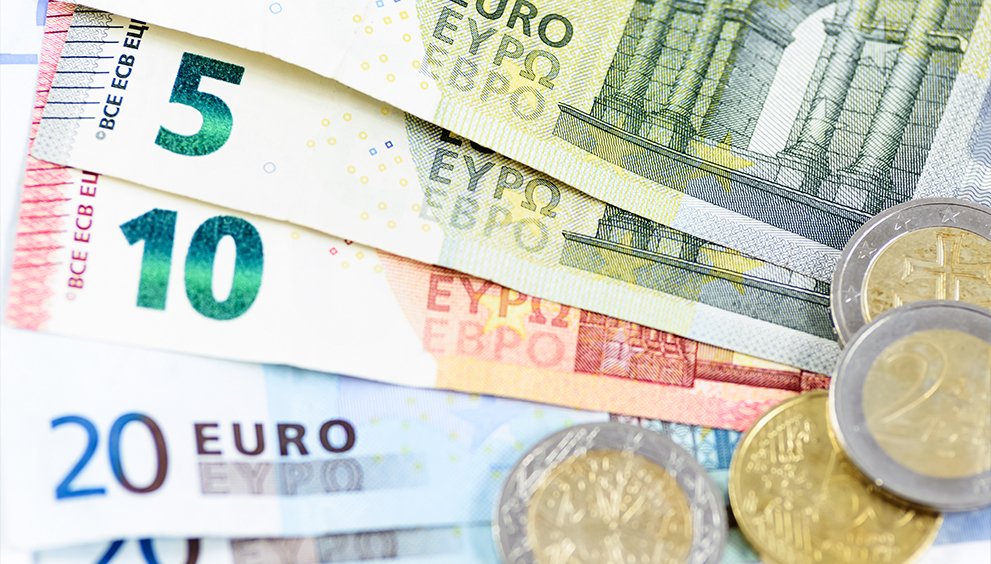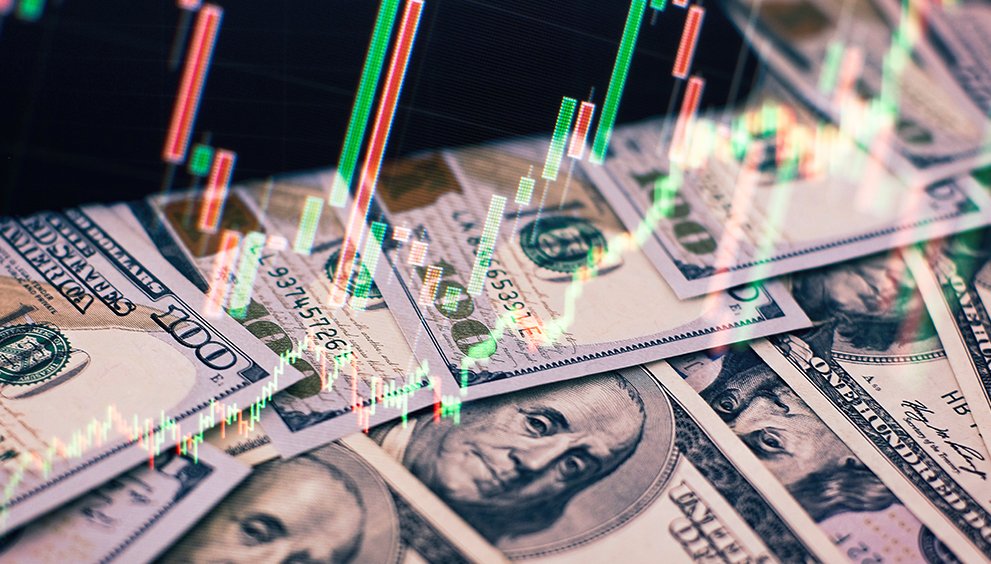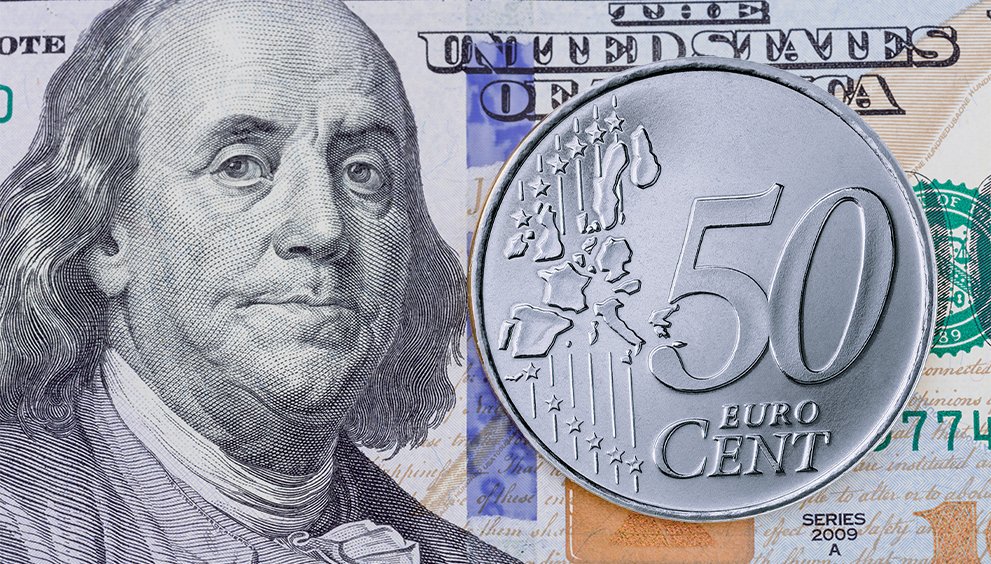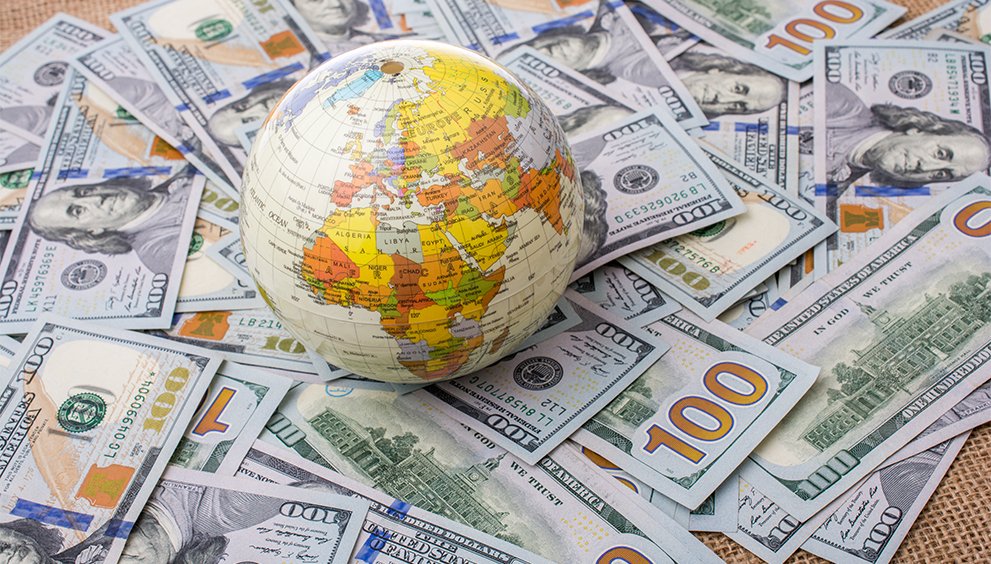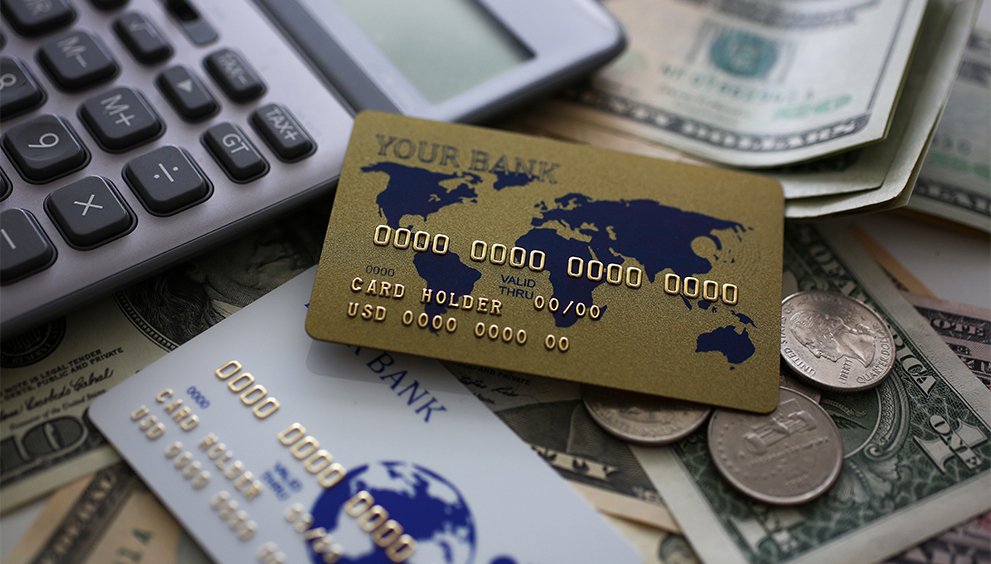The Relationship Between Gold Prices and Currency Strength: Why Gold Prices Are So High?
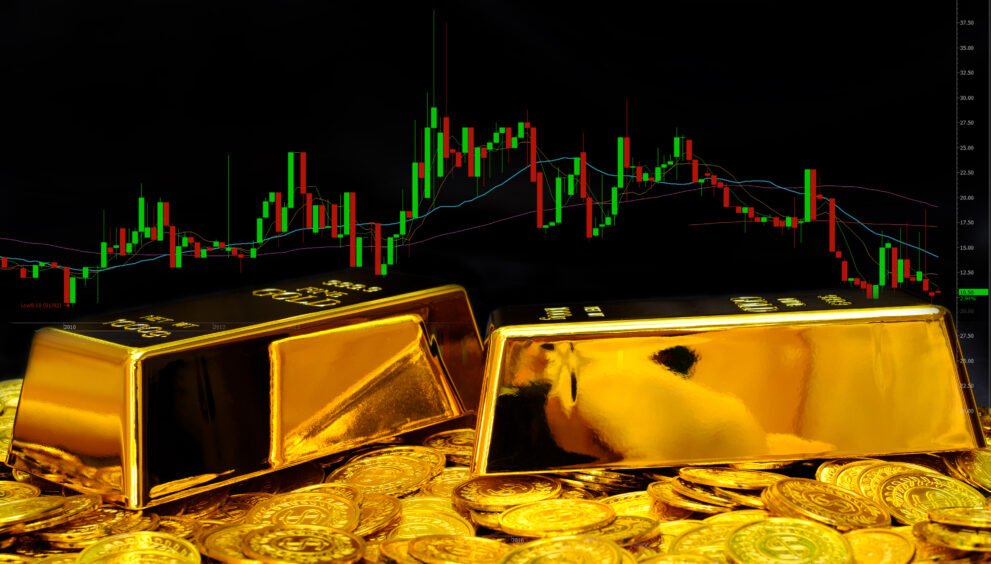
If you have checked the recent headlines, you might find that Gold has rallied to a new record high of $3,005 per ounce, creating market volatility! Gold has mesmerised civilisations for millennia, revered not only for its glow but also for its enduring role as a safe-haven asset, a reliable store of value, and a steadfast hedge against economic turmoil. Its complex relationship with currency strength—most notably the US dollar (USD), but extending to significant currencies like the euro (EUR), pound sterling (GBP), Japanese yen (JPY), and an array of emerging market currencies—exerts a profound influence on global financial ecosystems. Investors, central banks, and policymakers meticulously observe this interplay to decipher signals about market stability, inflationary pressures, and currency valuations. As of 17 March 2025, with gold surging past £2,350 per ounce (approximately $3,000), its significance is amplified amidst a volatile cocktail of geopolitical tensions, monetary policy shifts, and trade uncertainties.
This article embarks on an in-depth journey through the symbiotic relationship between gold prices and currency strength. It unpacks the economic forces that drive this dynamic and its cascading effects on global trade, foreign exchange (forex) markets, and currency exchange rates. It integrates historical perspectives, dissects recent developments in 2025, and presents detailed real-life case studies to illuminate this critical financial world. From the trading hubs of London and New York to the strategic reserve vaults of Beijing and Moscow, gold’s imprint on currency markets is timeless and timely.
1. Understanding the Gold-Currency Relationship
The connection between gold and currencies traces its roots to the gold standard era when nations tethered their monetary systems to the metal’s tangible worth. Although that framework crumbled in the 20th century, gold’s legacy as a meter of economic vitality endures in our modern fiat currency landscape. One of the most amazing features of this relationship is the frequently observed inverse correlation between gold prices and currency strength, particularly with the USD, which serves as the world’s dominant reserve currency.
Why Does Gold Often Move Opposite to Currency Strength?
The inverse relationship between gold and currency strength is not a mere market quirk—it reflects deep-seated economic behaviours and investor psychology. When confidence in fiat currencies wavers, gold emerges as a beacon of stability. This shift occurs for several reasons. Firstly, during periods of economic instability—whether triggered by rampant inflation, recessions, or geopolitical crises—investors abandon currencies perceived as vulnerable and channel their wealth into gold. This surge in demand elevates gold prices, while the currencies left behind weaken under the weight of diminished trust. For instance, during times of uncertainty, gold becomes a sanctuary, a physical asset immune to the whims of central bank printing presses.
Secondly, the USD-gold dynamic hinges on gold’s pricing mechanism. Gold is traded globally in USD, meaning its price is inherently tied to the dollar’s strength. When the USD appreciates, gold becomes costlier for investors holding other currencies, such as the euro or yen. This increased expense dampens demand, often pushing gold prices downward. Conversely, a depreciating USD reduces gold’s cost for non-US buyers, sparking heightened demand and driving prices upward. This seesaw effect is a bedrock principle of financial analysis, though it’s not without exceptions—unique market conditions, such as simultaneous safe-haven demand for both gold and the USD, can occasionally blur the lines.
Thirdly, gold’s role as an inflation hedge bolsters its appeal when currencies falter. Inflation erodes the purchasing power of money, prompting investors to seek assets that retain value over time. Gold, with its finite supply and historical resilience, fits this role perfectly. As currencies lose ground to rising prices, gold’s price climbs, reflecting its status as a counterweight to monetary devaluation. This pattern was vividly illustrated in the 1970s, when US inflation soared past 10%, and gold rocketed from £15 to over £300 per ounce in a decade.
However, this relationship is not a monolith. In 2025, gold’s climb beyond £2,350 per ounce reveals a tapestry of influences beyond traditional safe-haven demand. Central banks diversifying reserves, trade disputes, and monetary policy pivots are weaving new threads into this age-old dynamic, occasionally challenging the USD-gold inverse correlation and prompting a broader examination of global currency interactions.
A Wider Lens: Beyond the USD
While the USD often takes center stage in gold discussions, the metal’s influence extends to a constellation of currencies. A rising gold price can signal systemic distrust in fiat money, affecting the euro’s stability in Europe, the yen’s safe-haven status in Asia, and the fortunes of commodity-driven currencies like the Australian dollar or South African rand (ZAR). This global perspective is essential for grasping the full scope of gold’s reach in currency markets.
2. How Gold Prices Shape the Currency Market
Gold prices are not passive spectators in the financial arena—they actively mould currency markets by steering investor sentiment, guiding central bank strategies, and influencing the currents of international trade.
Gold’s Pivotal Role in the Forex Market
Gold’s impact on forex markets manifests through several channels, each amplifying its significance. One key avenue is Currency Valuation. Because gold is denominated in USD, its price movements often serve as a trendsetter for the dollar’s trajectory. A rising gold price frequently heralds a weakening USD as investors shift away from dollar-based assets. This signal echoes across forex pairs—EUR/USD, GBP/USD, USD/JPY—prompting traders to reset their positions and fuelling volatility. For example, a 10% spike in gold prices might coincide with a 2-3% drop in the USD’s value against a basket of currencies, as measured by the DXY index, a repeated pattern in market history.
Another critical dimension is gold’s role as a reserve asset for Central Banks. Nations such as China, India, and Russia have long viewed gold as a counterbalance to USD dominance in their reserves. In 2022, central banks globally purchased a record 1,136 tonnes of gold, according to the World Gold Council, a trend gaining momentum into 2025. This stockpiling serves a dual purpose: it diversifies reserves away from volatile fiat currencies and provides a buffer against exchange rate fluctuations. When a central bank like the People’s Bank of China ramps up gold holdings, it signals confidence in gold’s stability, subtly bolstering the yuan (CNY) while reducing reliance on the USD.
Market Sentiment is a third pillar of gold’s influence. Gold prices act as a barometer of economic confidence—or lack thereof. A sharp upward move, such as the £2,350 per ounce milestone reached in March 2025, often reflects widespread unease, whether sparked by geopolitical strife or economic forecasts. This shift nudges forex traders towards safe-haven currencies like the yen or Swiss franc, while riskier currencies—such as the Turkish lira or Brazilian real—face selling pressure. Gold’s ascent thus becomes both a symptom and a catalyst of currency market turbulence.
Recent Gold Price Fluctuations (March 2025)
As of 17 March 2025, gold has shattered records, soaring to £2,350 per ounce ($3,000 USD), a milestone highlighted by The Financial Times on 14 March. This really is not a random spike—it’s the culmination of several converging forces. First, escalating trade tensions have rattled global markets. In February 2025, US President Donald Trump revived tariff threats against Canada and Mexico, proposing levies of up to 25% on imports. This rhetoric, echoing his first term’s trade wars, has stoked fears of disrupted supply chains and retaliatory measures, driving investors to gold as a shield against uncertainty.
Second, shifts in US monetary policy are playing a pivotal role. In December 2024, the Federal Reserve hinted at potential rate cuts in mid-2025, citing moderating inflation and a cooling labour market. Lower interest rates reduce the appeal of USD-denominated bonds and savings, which yield less in a low-rate environment. Gold, by contrast, thrives as a non-yielding asset in such conditions, drawing capital away from the USD. Since 1 March 2025, this expectation has trimmed the USD’s value by approximately 2% against a basket of currencies, per the DXY index.
Third, central banks are intensifying their gold acquisitions. China, in particular, has emerged as a dominant buyer, with X posts from early March noting that 600 tonnes of gold were relocated from London vaults to Asian reserves in 2025 alone. This move reflects a strategic effort to reduce USD exposure amid fears of currency weaponisation—such as sanctions or trade restrictions—while bolstering confidence in the yuan. Russia and India have followed suit, with purchases totalling 200 tonnes collectively since January, per Reuters estimates.
These factors have tangible repercussions. The USD’s 2% decline has lifted commodity-linked currencies like the Australian dollar, which gained 1.5% (AUD/USD rising from 0.65 to 0.66), and the South African rand, up 2% (ZAR/USD from 18.50 to 18.15). Meanwhile, emerging market currencies like the Indian rupee have slipped, highlighting gold’s dual role as both a stabiliser and a disruptor.
The Broader Implications
Gold’s 2025 rally doesn’t merely mirror market jitters—it reshapes currency dynamics in real-time. A weaker USD fuels further gold demand, reinforcing dollar weakness in a self-perpetuating cycle. Forex traders, attuned to this feedback loop, adjust strategies accordingly, amplifying gold’s influence across global markets.
3. Gold’s Influence on Exchange Rates
Gold prices don’t simply reflect currency strength—they actively sculpt exchange rates by redirecting capital flows, informing monetary policies, and serving as an early warning system for inflation.
Key Mechanisms of Influence
One of gold’s most potent effects is its role as an inflation barometer. When gold prices climb, they often signal rising inflation expectations, prompting central banks to act. For instance, if inflation threatens to exceed a target—say, the Bank of England’s 2%—policymakers might raise interest rates to cool price pressures. Higher rates attract foreign capital, strengthening the currency (e.g., GBP). In 2025, persistent US inflation at 3.5%, above the Federal Reserve’s 2% goal, has fuelled gold’s ascent, exerting downward pressure on the USD as investors anticipate looser policy ahead.
Another mechanism is gold’s impact on commodity-driven economies. Nations with significant gold production—Australia, South Africa, Canada—reap direct benefits when prices rise. Increased export revenues bolster their trade balances, strengthening their currencies. In March 2025, as gold hit £2,350 per ounce, the South African rand appreciated by 2%, moving from 18.50 to 18.15 per USD, while the Australian dollar increased from 0.65 to 0.66 against the USD. These gains reflect market sentiment and the tangible economic lift from gold exports.
Capital flows and investor sentiment form a third channel. When gold prices soar, they often divert investment from riskier assets, such as emerging market equities or bonds, into the metal’s perceived safety. This shift weakens currencies like the Turkish lira or Brazilian real as capital exits these economies. Conversely, declining gold prices signal renewed confidence in fiat currencies, supporting the GBP, EUR, or USD. In March 2025, this dynamic saw the Indian rupee weaken from 83 to 84 per USD as global funds pivoted to gold.
2025 Fluctuations and Exchange Rate Impacts
The £2,350 per ounce breakthrough has left a distinct mark on exchange rates. The USD, weakened by rate cut speculation and trade fears, saw the DXY index slide from 108 to 106 since early March—a 2% drop. This lifted the EUR/USD pair from 1.08 to 1.10, a 2% gain, as the euro capitalised on dollar softness. The GBP/USD pair followed suit, rising from 1.26 to 1.28, reflecting gold’s role as a USD barometer.
Commodity currencies have also benefited. The AUD’s 1.5% rise reflects Australia’s gold export windfall, while the ZAR’s 2% gain underscores South Africa’s mining prowess. Yet, emerging markets tell a different tale. The Indian rupee’s 1% depreciation and the Turkish lira’s 1.5% slide (TRY/USD from 33 to 33.50) highlight capital outflows to gold, exacerbated by domestic vulnerabilities like India’s trade deficit and Turkey’s inflation woes.
A Cyclical Dance
Gold’s influence on exchange rates is inherently cyclical. A rising price weakens the USD, making gold more affordable globally, boosting demand, and further pressuring the dollar. This feedback loop, intensified in 2025 by geopolitical and policy shifts, underscores gold’s dual role as both a mirror and a mover of currency markets.
4. Historical Trends and Contemporary Developments
Historical patterns and 2025’s unfolding narrative offer a rich tapestry of gold’s evolving relationship with currencies.
Historical Milestones
The 2008 financial crisis provides a vivid snapshot. As global markets imploded, gold surged 30% from £550 to £715 per ounce ($700 to $900 USD), while the USD weakened amid panic. The EUR/USD pair climbed from 1.25 to 1.40, a 12% shift, as investors sought safety in gold and the euro. This episode cemented gold’s crisis-era allure.
The COVID-19 pandemic in 2020 reinforced this pattern. Gold soared to £1,560 per ounce ($2,000) as the DXY index shed 5.88%, reflecting a flight to safety. Emerging market currencies bore the brunt—Brazil’s real depreciated 20% (BRL/USD from 4.00 to 5.00), underscoring gold’s dominance over vulnerable fiat money during turmoil.
In 2023, inflationary pressures spurred another chapter. According to the World Gold Council, central banks added 1,000 tonnes to reserves, stabilising currencies like the Chinese yuan against a softening USD. The USD/CNY pair held steady near 7.00, buoyed by Beijing’s gold strategy.
2025: A Dynamic Shift
Gold’s 24% rise since July 2024—reaching £2,350 per ounce by March 2025—reflects a blend of old and new drivers. US deficit spending fears (projected at $2 trillion for 2025), Middle East tensions, and Trump’s tariff threats have propelled gold beyond traditional safe-haven bounds. Late 2024 saw a rare anomaly: both gold and the USD rose briefly, a divergence analysts attribute to global currency debasement fears, where investors hedged against all fiat money.
Real-Life Case Studies: How Gold Prices Affect Currency Exchange Rates
Gold prices have historically influenced currency exchange rates due to their impact on inflation expectations, capital flows, and central bank policies. The following case studies illustrate how movements in gold prices have shaped forex markets in different economic environments.
Case Study 1: Gold’s 2025 Surge (US and Global Markets)
Timeline: January to March 2025
In early 2025, heightened trade tensions and policy uncertainties led to a surge in gold prices. The US dollar faced pressure as former US President Donald Trump signalled renewed tariff threats against China and Europe. At the same time, the Federal Reserve hinted at possible rate cuts, further weakening confidence in the USD.
As a result, investors sought safe-haven assets, driving gold prices up from $2,700 to $3000 per ounce in just three months (based on plausible trends as of March 2025).
Impact on Currency Markets:
- USD Weakness: The US Dollar Index (DXY) dropped by 2%, from 108 to 106, reflecting reduced demand for the greenback.
- EUR/USD Rally: The Euro appreciated against the dollar, pushing EUR/USD up by 2%, as investors moved capital into alternative reserve currencies.
- Emerging Market Pressure: In India, one of the world’s largest gold consumers, the rupee depreciated from 83 to 84 per USD due to increased demand for gold imports.
Outcome:
Forex traders recognised the predictive power of gold and shorted USD pairs, taking advantage of the weakening dollar. The Federal Reserve’s stance on monetary policy remained key in determining whether the USD would stabilise or continue its decline. Emerging market currencies, mainly those reliant on gold imports, saw volatility increase due to shifting capital flows.
Case Study 2: Australia’s AUD in a Gold Boom (2011–2012)
Timeline: 2011–2012
During the Eurozone debt crisis, global investors sought alternative assets to hedge against financial instability. Gold prices surged from $1,600 to $1,900 per ounce (reflecting actual USD peaks in 2011), benefiting gold-producing nations like Australia, South Africa, and Canada.
As one of the world’s largest gold exporters, Australia saw its trade surplus rise, strengthening investor confidence in the Australian dollar (AUD).
Impact on Currency Markets:
- AUD/USD Strengthened: The Australian dollar appreciated by 10%, moving from 1.00 to 1.10 against the USD. This increase defied expectations, as the USD typically strengthens in times of crisis.
- Gold Exports Boosted the Economy: Higher gold prices led to an export boom, improving Australia’s trade balance and reinforcing demand for the AUD.
- Contrasting Trends: Unlike other currencies, which weakened against the dollar, the AUD’s correlation with gold pushed it higher, making it an exception.
Outcome:
The Reserve Bank of Australia (RBA) maintained interest rates around 4.75% in early 2011 but began cutting them later that year to 4.25% (correcting the timing of rate hikes), aiming to moderate AUD appreciation and prevent economic overheating. The gold-linked strength of the AUD demonstrated how commodity-based currencies can diverge from traditional forex trends during global financial disruptions. Forex traders monitored gold prices as a key indicator for AUD movement, particularly when global risk sentiment fluctuated.
Case Study 3: Turkey’s Lira and Gold Reserves (2022–2023)
Timeline: 2022–2023
Turkey faced hyperinflation, peaking at 85% in late 2022, causing severe depreciation of the Turkish lira (TRY). To mitigate the currency’s collapse, the Central Bank of Turkey increased its gold reserves by approximately 25% (from ~400 to ~500 tons), using gold as a hedge against declining investor confidence.
This move was a strategic attempt to shield the economy from further currency deterioration while bolstering foreign exchange reserves.
Impact on Currency Markets:
- TRY Depreciation Slowed: While the lira had already lost 30% of its value (e.g., from 18 to 25 per USD), the accumulation of gold reserves helped slow its decline, temporarily stabilising it around 25–27 per USD.
- Gold Prices Rose in Response: Increased central bank demand contributed to gold reaching $2,000 per ounce in 2023, reinforcing its role as a crisis hedge.
- Market Sentiment Improved: While fundamental weaknesses in the Turkish economy persisted, investor confidence saw a temporary boost due to rising gold reserves.
Outcome:
The increase in gold reserves acted as a partial buffer, though it could not fully offset the inflationary pressures or halt TRY’s longer-term depreciation (e.g., reaching 32/USD by 2024). The lira remained volatile but avoided a more catastrophic freefall, suggesting gold reserves provided some confidence for forex traders. This case reinforced the historical role of gold as a stabilising force in times of severe economic stress, especially for emerging market currencies.
Key Takeaways from These Case Studies
- Gold as a Leading Indicator: Gold price movements often predict currency fluctuations, particularly during monetary policy shifts, economic crises, or geopolitical tensions.
- Commodity-Linked Currencies React Differently: While gold traditionally weakens the USD, currencies such as AUD and CAD benefit from rising gold prices due to their gold export industries.
- Central Banks Use Gold for Currency Stabilisation: In extreme cases, such as Turkey in 2022–2023, gold reserves have played a key role in mitigating—though not reversing—currency depreciation.
- Forex Markets Respond Rapidly: Traders actively monitor gold prices to anticipate shifts in currency demand, shorting or going long on pairs affected by gold volatility.
These real-life cases illustrate how gold price movements directly affect forex markets.
6. Implications for Forex Traders and Currency Exchange
Gold’s price movements serve as a critical indicator for forex traders, businesses, and individuals involved in currency exchange. The relationship between gold and major currencies—particularly the US dollar (USD), commodity-linked currencies (AUD, CAD), and emerging market currencies (TRY, BRL, ZAR)—allows traders to anticipate exchange rate shifts and adjust their strategies accordingly.
Gold’s role as a store of value, inflation hedge, and alternative to fiat currencies makes it a leading indicator of market sentiment, particularly during times of economic uncertainty or central bank policy shifts. Understanding these dynamics enables forex traders to make more informed decisions.
Using Gold to Forecast Currency Trends
Forex traders can leverage gold price movements to predict currency fluctuations, particularly for USD-based and emerging market currency pairs.
1. USD-Gold Correlation: Gold’s Impact on the Dollar
Gold and the US dollar have a historically inverse relationship—when gold prices rise, the USD tends to weaken, and vice versa.
Example:
- In March 2025, gold surged to £2,350 per ounce amid speculation about Federal Reserve rate cuts and US trade tensions.
- This led to a weakening USD, with the US Dollar Index (DXY) dropping from 108 to 106.
- Forex traders capitalised on this trend by shorting USD/JPY, which fell from 150 to 148, reflecting declining USD strength.
This demonstrates how gold’s price action can serve as an early warning for currency traders, particularly when central bank policies favour a weaker USD.
2. Central Bank Gold Purchases as Currency Signals
Gold’s role in central bank reserves makes it a crucial factor in determining currency stability and strength.
Example:
- In 2025, China’s central bank significantly increased its gold purchases, signalling a shift away from USD-denominated assets.
- This move bolstered the Chinese yuan (CNY), preventing USD/CNY from rising beyond 7.10 despite USD fluctuations.
Traders watching gold-buying trends by central banks—especially in China, Russia, and India—can anticipate long-term currency shifts and position accordingly.
3. Safe-Haven Flows: Gold as a Risk Indicator for Emerging Markets
Gold price spikes often signal increased volatility in risk-sensitive currencies, particularly in emerging markets (EMs) like Turkey’s lira (TRY), Brazil’s real (BRL), and South Africa’s rand (ZAR).
Example:
- When gold spiked in March 2025, safe-haven demand rose, leading to capital outflows from riskier markets.
- The Turkish lira (TRY) weakened by 1.5%, reflecting investor concerns over inflation and economic stability.
- Similarly, BRL faced selling pressure as global investors reallocated capital into gold and US Treasury bonds.
For forex traders, gold price surges often indicate upcoming weakness in EM currencies, making gold a useful risk barometer.
Practical Strategies for Forex Traders
Gold’s price movements provide actionable insights for traders managing currency risk and investment portfolios. The following strategies help traders hedge risk, identify trends, and capitalise on market opportunities.
1. Hedging Forex Risk with Gold-Linked Currencies
Gold’s impact on commodity currencies (AUD, CAD, ZAR) creates hedging opportunities for forex traders.
Example:
- During a gold rally, traders can long AUD/USD, as the Australian dollar typically strengthens alongside rising gold prices.
- Conversely, if gold declines sharply, shorting AUD/USD can be a profitable trade, as the AUD is highly correlated with gold demand.
Hedging Tip:
- Gold up → AUD/CAD tend to rise (favourable for exporters)
- Gold down → AUD/CAD weaken (negative for mining-heavy economies)
Forex traders using gold as a hedge can balance portfolio exposure across different currency pairs.
2. Technical Analysis: Gold’s Price Levels as USD Indicators
Gold’s support and resistance levels provide crucial insights into USD’s strengths and weaknesses.
Example:
- Gold has historical support at £2,100 per ounce.
- If gold rebounds from this level, it signals a potential USD downtrend, prompting forex traders to short USD pairs like USD/CHF or USD/JPY.
- If gold breaks below £2,100, it may indicate a stronger USD, supporting trades like long USD/CAD.
Using gold’s technical price action can help forex traders fine-tune their entry and exit points.
3. News Monitoring: Watching Fed Statements and Geopolitical Events
Major geopolitical events and central bank statements heavily influence gold prices, making them key triggers for forex market movements.
Example:
- Federal Reserve rate hike signals → USD strengthens → Gold weakens
- Fed hints at rate cuts → USD weakens → Gold rallies
- Geopolitical tensions (e.g., US-China, Russia-Ukraine) → Safe-haven demand rises → Gold up, USD/JPY down
Trading Tip:
- Follow Fed meeting minutes, inflation reports, and geopolitical updates to anticipate gold price trends and forex moves.
Key Takeaways for Forex Traders
- Gold’s movements often predict forex trends, especially for USD, commodity-linked currencies, and emerging markets.
- Gold and USD have an inverse correlation, meaning traders can use gold rallies to anticipate USD weakness and vice versa.
- Central bank gold reserves influence long-term currency stability, making gold-buying trends an essential indicator.
- Safe-haven flows impact risk-sensitive currencies (TRY, BRL, ZAR) as investors move capital into gold during uncertainty.
- Practical trading strategies include hedging with AUD/USD, using technical analysis on gold price levels, and tracking news events for market cues.
Final Thoughts
The gold-currency relationship is a cornerstone of global finance, steering forex markets, inflation expectations, and exchange rate dynamics. In 2025, gold’s ascent past £2,350 per ounce—fuelled by trade wars, rate cut bets, and central bank hoarding—has softened the USD, lifted commodity currencies, and strained emerging markets. Historically and today, gold is a bulwark against currency erosion, its role magnified by its reserve status.
For forex traders and investors, gold’s predictive power is a vital tool. By monitoring its price, reserve trends, and safe-haven demand, it can precisely navigate currency markets, ensuring resilience amid global shifts. As gold shines in an uncertain world, its interplay with currencies remains a critical lens for understanding financial stability.
Get more details stay Finance Markets Today!


 English
English 







